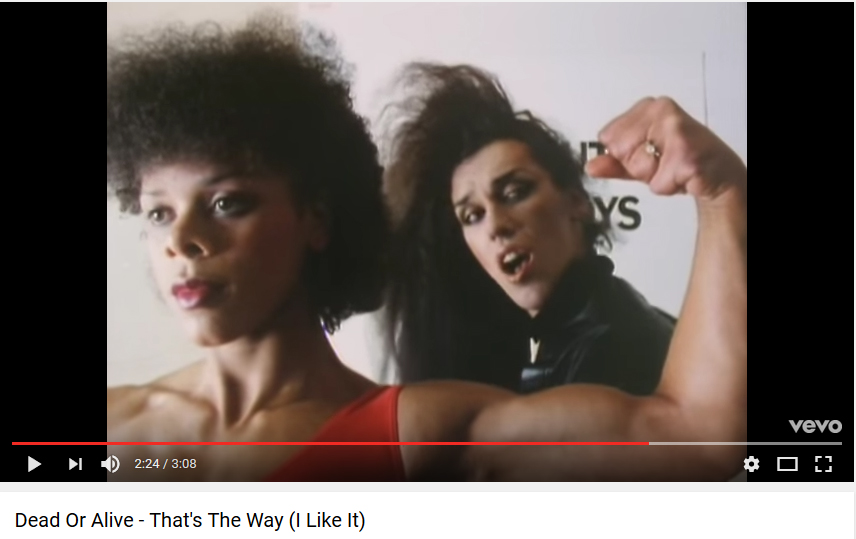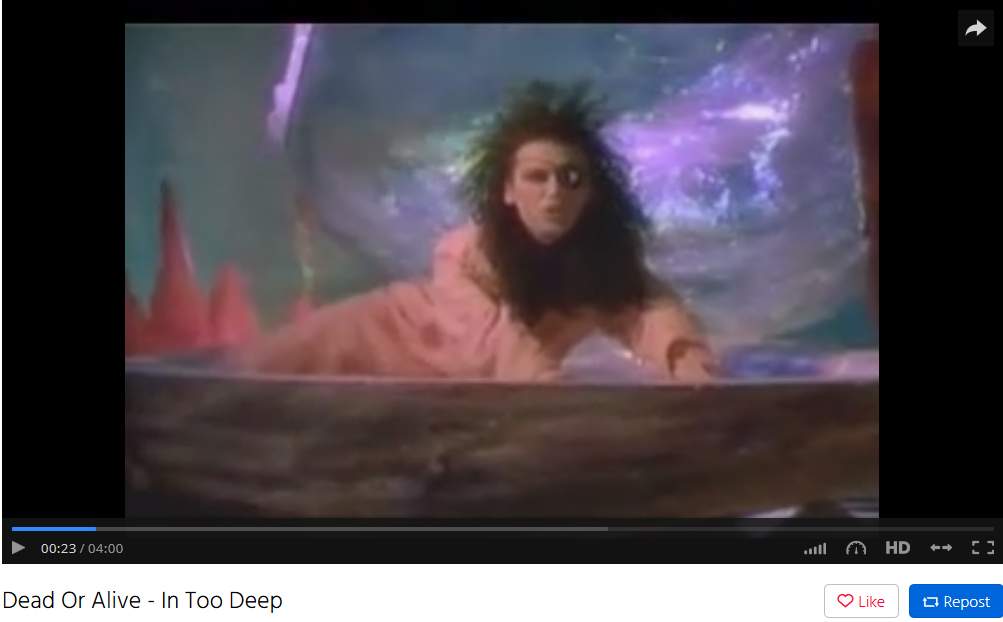Being the second in a multipart essay on, first, the queer aesthetics of Dead or Alive, second, the effects thereof on the band, and, third, the effects thereof on Pete Burns, with AIDS panic and transmisogyny for good measure!
I previously demonstrated that Dead or Alive regularly used performance of gay male eroticism as part of their image. They also employed a more generally queer aesthetic of gender play, endearing them even less to the mainstream US.
Check out the official music video for their 1984 cover of KC and the Sunshine Band’s 1975 That’s the Way I Like It. The entire thing occurs in a gym locker room with Pete drooling over a bunch of female bodybuilders. The other three band members do backup vocals and hold up rating cards. So we have Pete doing a stereotypically “feminine” performance with long hair, heavy makeup, and lithe hip swivels, and the bodybuilders doing a stereotypically “masculine” performance with cropped hair, hard bodies, and direct gazes. Furthermore, it remains unclear whether the other band members are rating Pete and/or the women. The it that everybody likes in this video could arguably be sexy gender-bending performance.

A year later, Dead or Alive came out with In Too Deep, from their 1985 album Youthquake. Besides the obviously gay merman pining after Pete, the music video also showcases some more genderqueerness. Yes, that’s the technical term for what happens when you open the video with Pete in a clam shell. Again he’s doing his favorite androgynous performance with the hair and the makeup and the body language, but playing it up by hanging out in a clam shell, which, for inscrutable reasons, has long symbolized the vulva and femininity. Hooray for symbolic ambiguity!

Genderqueerness appears not just in Dead or Alive’s images, but in their lyrics as well. Usually when guys sing pop songs about people that they love, they sing about women, using gendered terms such as baby, honey, girl, etc. By contrast, the guys of Dead or Alive consciously choose to sing about partners in generic, ungendered terms. Indeed, Lover Come Back to Me addresses the object of affection as a generic lover: “Lover come back to me / You don’t have to knock on my door, no / Kick it right down, right down.” Meanwhile, the lyrics to Brand New Lover ask only for “someone who will lie to me / Who doesn’t notice all the others” — no sex or gender specified, either for the new lover or any of the other members of the crowd. [As a caveat, though, it’s entirely possible that Brand New Lover means more specifically a brand new gay lover, as the reason for rejecting the previous one — “Your sweet nature, darling, was too hard to swallow” — sounds a lot like “Sorry — didn’t like the taste of your cock.”] In the limited heteronormative vocabulary of pop songs, using ungendered terms like lover is a radical assertion of genders, performances, loves, and desires beyond the heteronormative ones.
Other parts of this essay:
Part I Addendum — Extreme Homoeroticism.
Part III — Effects on the Band.